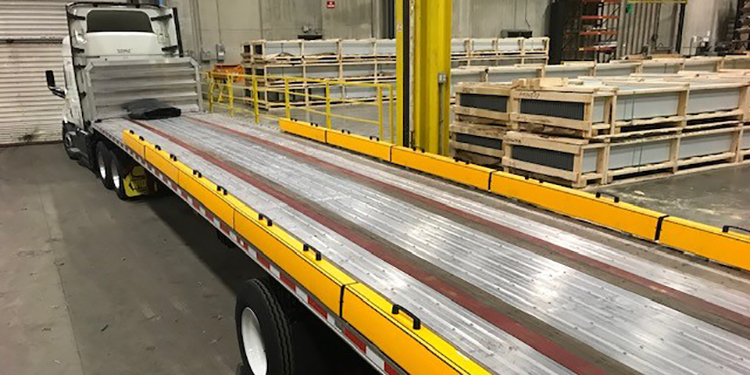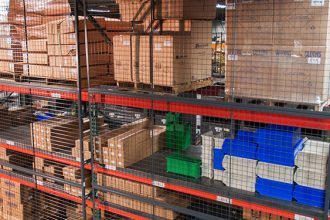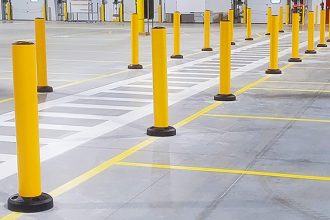6 Ways To Limit Risk When Loading Flatbed Trailers With Forklifts

Driving a forklift onto a flatbed trailer to load product can be an extremely risky endeavor. That’s because flatbed trailers lack fixed guardrails or other protective barriers on their sides, meaning the potential exists for the driver and vehicle to roll off the side of the trailer and fall at least four feet to the ground.
Most commonly seen construction site delivery applications, where materials that must be kept dry are stored and loaded onto the trailer inside a warehouse — and flatbed trailers must be used to facilitate unloading with telehandlers or overhead cranes at the destination— here are six ways to reduce the risk of an accident when a forklift is loading a flatbed trailer.
- Keep the forklift on the floor. Optimally, the best way to completely eliminate the risk of a forklift driving off the side of a flatbed is to never have the forklift drive onto the flatbed for product loading. Instead, the safest practice would be to load the trailer while the forklift remains at floor level. However, for a variety of reasons that may not be possible. In that case…
- Load the trailer without a forklift. Utilizing an overhead crane and hoist system to load a flatbed trailer eliminates the need for a forklift and operator to interact with the truck.
- Load from the center of the trailer. If a forklift must travel on top of the flatbed trailer for product loading, best practice is for the operator to load only from the middle of the trailer. This approach ensures that the open sides are avoided, reducing the risk of driving off.
- Use recessed dock pits for flatbed trailer loading. By creating a slope that enables the trailer to be backed in and flush to the floor of the dock, dock plates installed on the sides and back of the opening can be extended to meet the trailer deck. This eliminates the significant height difference between trailer and floor, allowing the forklift to drive directly off and on the deck to and from the dock.
- Load the trailer under cover. To prevent rain, sleet, snow and other inclement weather from creating a slippery surface on the flatbed trailer deck that could cause traction problems for a forklift, always load a vehicle in a covered dock area. This further reduces the risk that the driver will lose control of the vehicle.
- Use a temporary safety barrier. There are a variety of safety barriers available that can be temporarily placed into the rail pockets or slots that are integrated into the sides of a flatbed trailer. These include either wood or aluminum fencing, which are typically 3-4 feet tall, or wheel barrier curbs that are tall enough to stop the forklift’s wheels without impeding the load. Both barrier types prevent a vehicle from driving over the side of the trailer deck and can be removed once loading is complete.
Looking for more best practices in preventing accidents at the loading dock? The members of the Protective Guarding Manufacturers Association (ProGMA) are available for guidance and recommendations.



